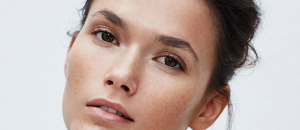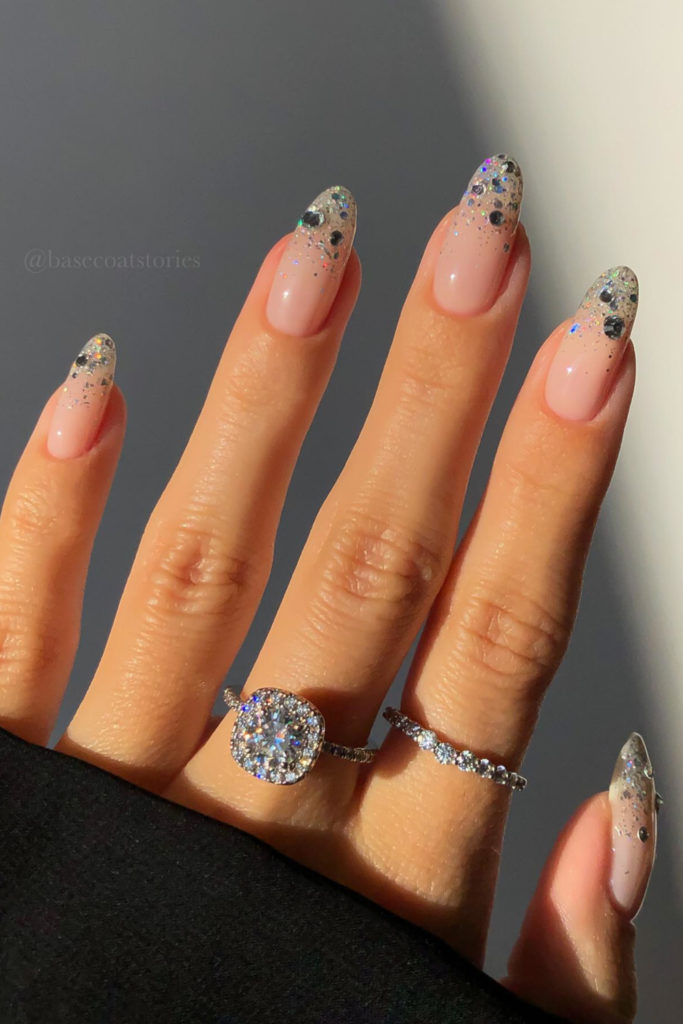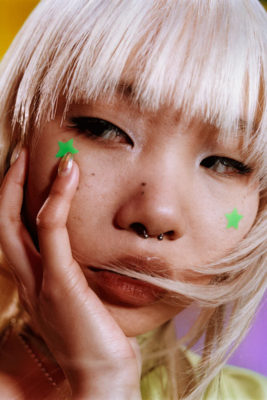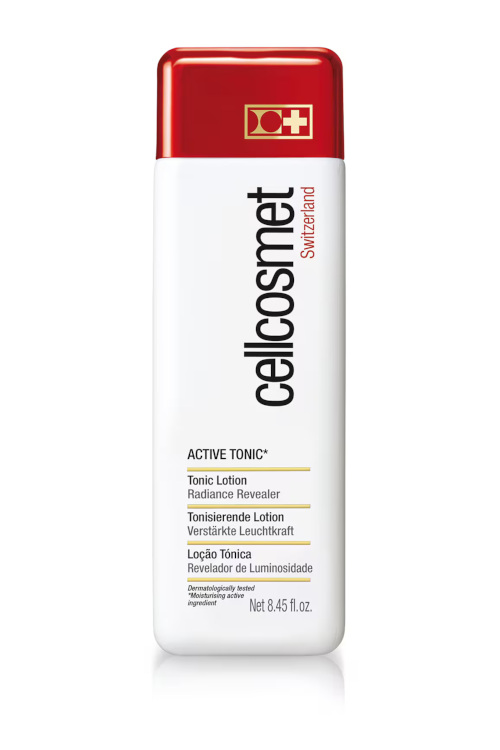
Have You Tried TikTok’s Viral DIY Rice Mask?
By
1 year ago
This at-home hack promises smooth, glass skin in no time
The latest skincare craze to hit the internet? It’s rice, of course. According to TikTokers and beauty know-it-alls, this cupboard essential isn’t just good for a filling weeknight meal – rice can also, apparently, make a pretty good face mask too. We asked the experts what we need to know about the latest skincare buzzword, including whether it really works.
Why Rice Masks Are Big On TikTok Right Now
What Is A Rice Mask?
‘A rice mask is a mask that contains rice flour or rice bran, often alongside other beneficial ingredients,’ explains Dr Paris Acharya, leading aesthetics and skincare expert, and cofounder of The Ardour Clinic. ‘It is applied to the face in order to gently exfoliate the skin, helping to create a brighter and smoother complexion.’
You’ll have heard of beauty gurus using rice masks – or, even more likely, seen them online – as part of their skincare routine. But while the fad has had a modern boom on TikTok, the tradition of using rice as a beauty measure dates back several years. ‘Rice in skincare has been used in Southeast Asia for decades, and rice is a popular ingredient in Korean beauty culture, where it’s praised for its anti-inflammatory properties as well as its ability to brighten skin,’ highlights Dr Acharya. ‘Rice masks have more recently gone viral on TikTok, in which many creators create homemade masks and emphasise their ability to help address acne and breakouts.’
What Are Rice Flour & Rice Bran?
So, what exactly are you putting on your face? ‘Rice flour, or Oryza Sativa Powder, is a natural ingredient that is commonly found in cosmetics,’ says Dr Acharya. ‘It is sourced from rice grains that have been finely ground, and it is used because of the fact that it contains nutrients and antioxidants which can help to exfoliate the skin and remove dead skin cells.
‘The bran is the outer layer of the rice grain,’ she continues. ‘It is mainly composed of the pericarp, aleuron, seed coat and germ, and contains antioxidant and anti-inflammatory properties. It also contains ferulic acid and phytic acid, these are bioactive components which are added to some skincare products.’
@lebaneseangel22 Replying to @user8269618238445 rice mask recipe! #skincarehacks #glassskin #koreanglassskin #ricemask #ricemaskrecipe #ricemasktutorial #diyfacemask ♬ original sound – MW
Is It Good For Your Skin?
On the whole, it seems rice masks are pretty good for your skin. ‘They typically contain ingredients with anti-inflammatory and antioxidant properties,’ confirms Dr Acharya. ‘It’s also believed that they help address ageing as well as reduce UV damage. A rice mask can also work as a chemical exfoliator, helping to remove dead skin cells, and to hydrate and even out skin tone.’
Some of the other skincare benefits include:
- Improve skin texture
- Even out skin tone
- Minimise the appearance of pores
- Remove dead skin cells
- Reduce UV damage
Does It Work For All Skin Types?
‘Rice powder is suitable for most skin types, but is particularly beneficial for mixed and oily skin types as well as dry and sensitive,’ highlights Dr Acharya. ‘It’s also very absorbent, and so for this reason it can benefit oily or shiny skin, which it can help to mattify.’
Can Using A Rice Mask Help Create Glass Skin?
Another beauty trend from across the globe, glass skin refers to flawless skin that is pore-less and translucent – and many TikTokers believe it can achieved through regularly using rice masks. ‘Glass skin is the term used to describe skin that is exceptionally smooth and even in tone, without obvious pores and with a healthy glow,’ Dr Acharya explains.
But does it work? Dr Acharya thinks so. ‘A rice mask can help to create glass skin by exfoliating dead skin cells, allowing fresh skin to be exposed,’ she says. ‘By absorbing the excess oil it can also help to smooth the skin and minimise pores.’
@lailapaul7 Replying to @Luvlayla how I make my rice face mask #ricemask #rice #skincare ♬ Bad Girls by M.I.A – Your Audio Girl🎧💕
How To Apply A Rice Mask
Where: Rice masks are worked in circular motions into the face before rinsing.
When: Within your skincare regime, use after cleansing and before moisturising.
How Often: You shouldn’t use a rice mask more than three times a week in order to avoid over exfoliation of skin. Over-exfoliation can negatively impact the skin’s natural pH levels, damaging the skin barrier.
How Long: On average, a DIY rice mask should last for up to a week in the fridge, depending on the ingredients used. For example, it might have a shorter shelf life if you add milk.
Where To Shop Rice Masks
Recipe: DIY Rice Mask
Want to try the trend at home (without the hefty price tag)? Make like a TikToker and try making a DIY rice mask at home. ‘While I would always advocate opting for proper skincare products over DIY alternatives, the TikTok method of creating a rice mask at home offers a simple alternative.’ Below, Dr Acharya outlines the steps to make a mask at home:
- Prepare The Rice: Add some rice to a pan with some water. Rinse and stir the mixture a few times, draining the water each time.
- Boil The Rice: Add more water and boil your rice until soft.
- Make Your Mask: Once done, strain (leaving a small amount of water left) and mash or blend into a smooth paste. Add any other ingredients (milk and honey are popular on TikTok) and mix well. Let it cool in the fridge for an hour or so.
- Use It: Apply to a clean face and leave on for about 20 minutes, before rinsing.
@milkydew Replying to @LLA 🕊️ . How to make the viral korean rice mask🤍 Ingredients: 🤍 1 cup of jasmine rice 🤍 3 cups of water #ricemask #koreanskincare #homeremedy #diyskincare #skincaremask #facemask #glassskinroutine #glassskin #kbeautysecrets #skincaretips #diyskincare #ricewater #congee #narasmith ♬ Just Give Me One More Day – Alej
How Effective Are Rice Masks, Really?
So, it all sounds good on paper – but Dr Acharya warns that you should be careful with any DIY skincare trend. ‘Rice water has been a popular at-home remedy for Japanese and Korean skincare regimes for a long time, and they are popular for their ability to reduce inflammation and reduce outbreaks,’ she starts. ‘We know that rice does contain ferulic acid and vitamin A, which can be beneficial to skin. But for the most effective results I would advise using a mask which has been specially formulated.
‘Keep in mind that the products used in a DIY rice mask have not been specifically designed and tested for application to the skin,’ she continues. ‘If a product has been especially formulated to be used on the skin it will contain active ingredients and components in the right strengths to achieve optimum results, whereas DIY measures and guidelines could risk causing irritation, over-exfoliation, disrupted pH levels and a damaged skin barrier.
‘All in all, I would always advise exercising caution,’ Dr Acharya finishes.
Featured image: Polina Tankilevitch, Pexels




























